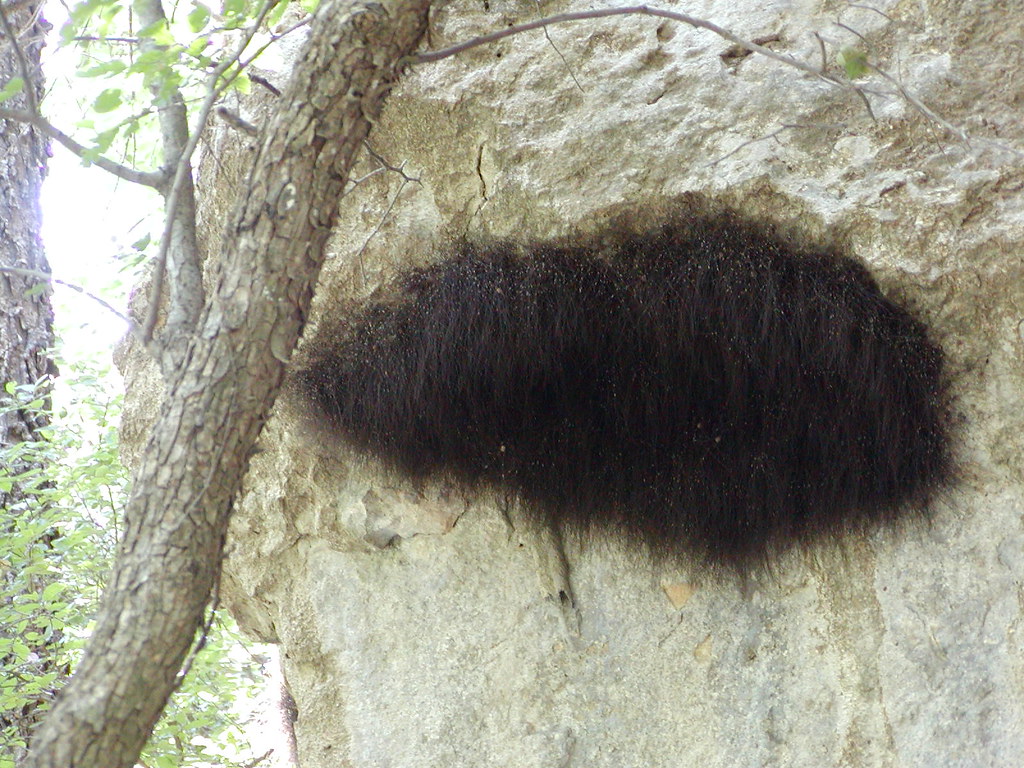http://en.wikipedia.org/wiki/Opiliones wrote:
<<Opiliones are an order of arachnids commonly known as harvestmen. Although they belong to the class of arachnids, harvestmen are not spiders, which are of the order Araneae rather than the order Opiliones. These arachnids are known for their exceptionally long walking legs, compared to body size, although there are also short-legged species. The difference between harvestmen and spiders is that in harvestmen the two main body sections are broadly joined, so that they appear to be one oval structure; they also have no venom or silk glands. In more advanced species, the first five abdominal segments are often fused into a dorsal shield called the
scutum, which is normally fused with the carapace. Sometimes this shield is only present in males. The second pair of legs are longer than the others and work as antennae.
The feeding apparatus (stomotheca) differs from other arachnids in that ingestion is not restricted to liquid, but chunks of food can be taken in. The stomotheca is formed by extensions from the pedipalps and the first pair of legs.
They have a single pair of eyes in the middle of their heads, oriented sideways. However, there are eyeless species, such as the Brazilian Caecobunus termitarum (Grassatores) from termite nests, Giupponia chagasi (Gonyleptidae) from caves, and all species of Guasiniidae.
Harvestmen have a pair of prosomatic defensive scent glands (ozopores) that secrete a peculiar smelling fluid when disturbed, confirmed in some species to contain noxious quinones. Harvestmen do not have silk glands and do not possess venom glands, posing absolutely no danger to humans. They do not have book lungs, and breathe through tracheae only. Between the base of the fourth pair of legs and the abdomen a pair of spiracles are located, one opening on each side. In more active species, spiracles are also found upon the tibia of the legs. They have a gonopore on the ventral cephalothorax, and the copulation is direct as the male has a penis (while the female has an ovipositor). All species lay eggs.
The legs continue to twitch after they are detached. This is because there are 'pacemakers' located in the ends of the first long segment (femur) of their legs. These pacemakers send signals via the nerves to the muscles to extend the leg and then the leg relaxes between signals. While some harvestman's legs will twitch for a minute, other kinds have been recorded to twitch for up to an hour. The twitching has been hypothesized as a means to keep the attention of a predator while the harvestman escapes.
Many species are omnivorous, eating primarily small insects and all kinds of plant material and fungi; some are scavengers, feeding upon dead organisms, bird dung and other fecal material. This broad range is quite unusual in arachnids, which are usually pure predators. Most hunting harvestmen ambush their prey, although active hunting is also found. Because their eyes cannot form images, they use their second pair of legs as antennae to explore their environment. Unlike most other arachnids, harvestmen do not have a sucking stomach or a filtering mechanism. Rather, they ingest small particles of their food, thus making them vulnerable to internal parasites such as gregarines.
Although parthenogenetic species do occur, most harvestmen reproduce sexually. Mating involves direct copulation, rather than the deposition of a spermatophore. The males of some species offer a secretion from their chelicerae to the female before copulation. Sometimes the male guards the female after copulation and, in many species, the males defend territories. The females lay eggs shortly after mating or anytime up to several months later. Some species build nests for this purpose. A unique feature of harvestmen is that in some species the male is solely responsible for guarding the eggs resulting from multiple partners, often against egg-eating females, and subjecting the eggs to regular cleaning. The eggs can hatch anytime after the first 20 days, up to almost half a year after being laid. Harvestmen need from four to eight nymphal stages to reach maturity, with six the most common.
They are mostly nocturnal and colored in hues of brown, although there are a number of diurnal species which have vivid patterns in yellow, green and black with varied reddish and blackish mottling and reticulation.
To deal with predators such as birds, mammals, amphibians and spiders, some species glue debris onto their body, while many play dead when disturbed. Many species can detach their legs, which keep on moving, to confuse predators. Especially long-legged species vibrate their body ("bobbing"), probably also to confuse predators. This is similar to the behavior of the similar looking but unrelated cellar spider, which vibrates wildly in its web when touched. Scent glands emit substances that can deter larger predators, but are also effective against ants.
Many species of harvestmen easily tolerate members of their own species, with aggregations of many individuals often found at protected sites near water. These aggregations can count up to 200 animals in the Laniatores, but more than 70,000 in certain Eupnoi. This behavior is likely a strategy against climatic odds, but also against predators, combining the effect of scent secretions, and reducing the probability of each individual of being eaten.
Harvestmen are very old arachnids. Fossils from the Devonian Rhynie chert, 410 million years ago, already show characteristics like tracheae and sexual organs, proving that the group has lived on land since that time. They are probably closely related to the scorpions, pseudoscorpions and solifuges; these four orders form the clade Dromopoda. The Opiliones have remained almost unchanged morphologically over a long period. Indeed, one species discovered in China, fossilized by fine grained volcanic ash around 165 million years ago, is hardly discernible from its modern day descendant and belongs to an existing family of harvestman.>>




